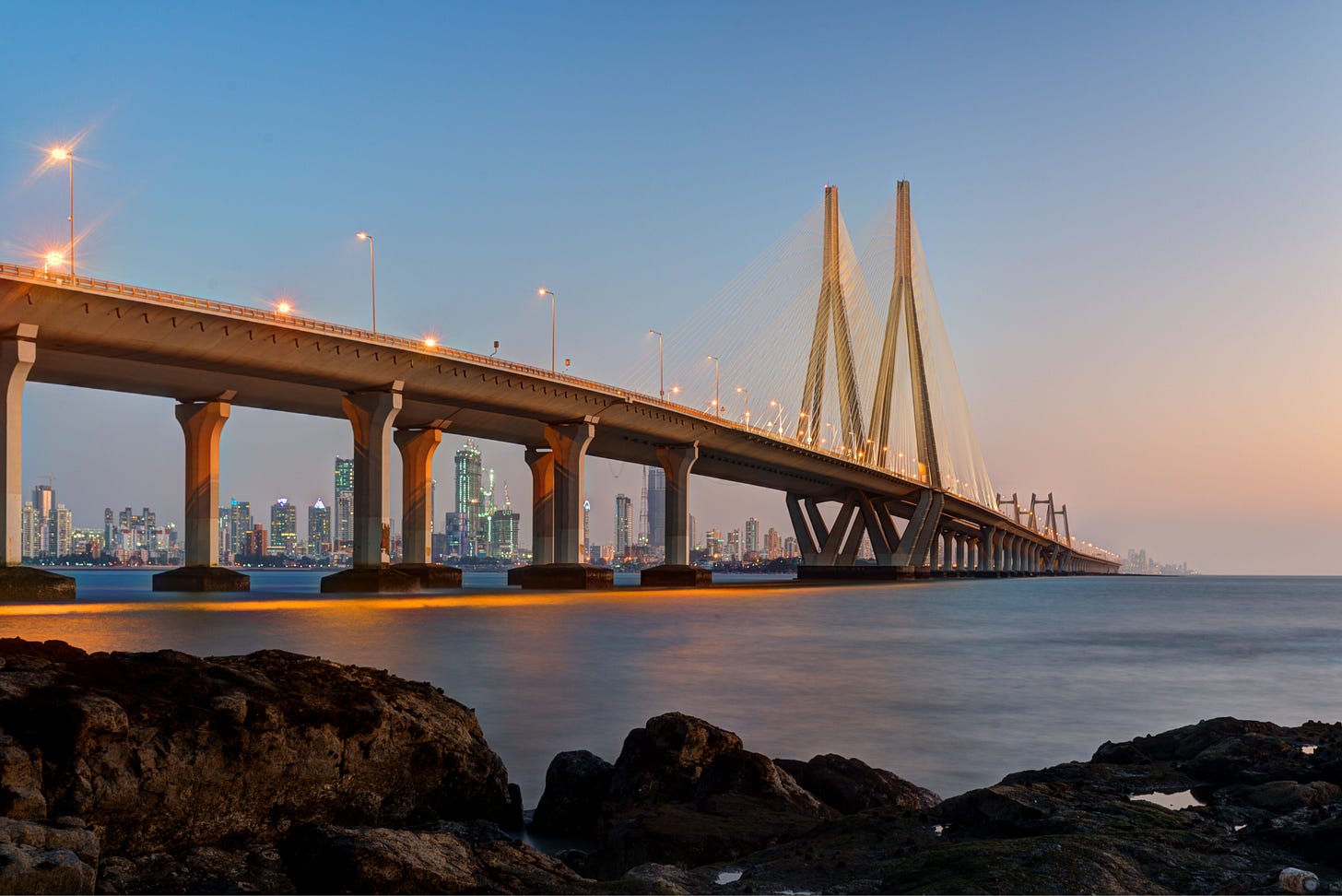India's Dynamic Growth Story
The importance of FDI to realizing economic potential
I have the opportunity to visit India at least twice a year to participate in corporate board meetings. I’ve watched the city of Mumbai - still referred to as Bombay on occasion in the West, lift itself up in anticipation of a more important stage in the overall Indian economy, in step with New Delhi’s ambitions to be a developed economy of US$5 trillion by the nation’s 100th anniversary in the not too distant future. By many measures India stands to achieve its ambitions. But it still has a long way to go.
One sees this on arriving by car in Pune about three hours drive from Mumbai across the newly opened and beautiful sweeping Atal Setu bridge. But just inside the boundaries of Pune, one of the largest IT hubs in India, the road narrows and India’s colorful chaos blooms from both sides of the dusty road. This too is likely to give way someday to the ambitions of the world’s fastest growing emerging market.
Can India’s dynamic growth story turbo-charge critical inflows of foreign investment needed to fuel development, create quality jobs, and boost a green transition, in a region that has already had this year record high temperatures and some of the world’s worst air quality?
Recent indicators suggest the answer may well be a resounding yes despite the mixed picture painted for foreign direct investment (FDI) and foreign portfolio inflows (FPI) over the last two fiscal years.
Did you know…⧉
⧉ India's fiscal year begins on April 1st, ending on March 31st, similar to Japan.



